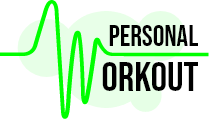Why You Should Drink from Glass Bottles and Examine Your Cosmetic Products Carefully
Today I’m going to talk about a topic that I’ve been working on for a short time, but all the more intensively: environmental toxins and hormone disruptors. What are they and how harmful are they?
WHAT does the food chain have to do with toxin levels?
When I teach about the food chain in biology class, I sometimes use the example of Minamata disease. In the 1950s, hundreds of Japanese died when mercury waste was dumped into the sea at Minamata Bay. Thousands were poisoned and suffered severe nervous system damage. How did this happen?
The mercury reached the large predatory fish through algae consumed by small crabs and fish, which were then caught and eaten by local residents. As the amount was multiplied through the food chain, a single large fish contained huge amounts of mercury.
Even today, due to the concentration of heavy metals in predatory fish, you should not only eat tuna, swordfish and other hunters.
The fact that amalgam fillings are highly problematic, if you look at the above story, is obvious and widely known.
Aluminum—the ubiquitous metal
Aluminum is a fairly new topic. It is not a necessary trace element and is harmful in amounts that the body cannot excrete. For this reason, aluminum-free deodorants have been available for some time. However, we also ingest aluminum through barbecue pans, cans and tins, because it dissolves from them, and the longer food is in them, the more it does so. Could it even be the reason why Coca-Cola from an aluminum can tastes different? High levels of aluminum have also been found in cans of peas and tuna. Aluminum has also been linked to Alzheimer’s disease.
How cosmetics alter our hormonal balance
Also less well known are problematic ingredients in cosmetic products, but they are found in abundance. Check your creams, shampoos, douches, etc. for phthalates, parabens, or sodium lauryl sulfate (often called sodium lauryl sulfate or sodium laureth sulfate).
Phthalates are plasticizers that interfere with thyroid function and various reproductive hormones. This can lead to estrogen dominance in women, which in turn has various consequences, including body fat. The other substances are also highly controversial.
A great and easy way to find out if your cosmetic products contain substances of concern is to scan them with the Toxfox app.
Bisphenol A (BPA)—more than just a plasticizer
Bisphenol A (BPA) is also a plasticizer and is found in many plastics, including plastic bottles (even baby bottles!). A lot of BPA is also found in cans. However, when I looked at my can of tuna, I found no information about the ingredients on the packaging. Just the contents of the can!
Bisphenol A interferes with our hormone balance by acting on the estrogen receptors. This is one of the many reasons why many couples are unable to conceive. Studies have also shown an effect on the immune system. The effect on the risk of colon cancer is controversial.
Conclusion and specific advice on environmental toxins
Everyone must decide for themselves how important their health is to them and how much effort they are willing to put into it. Many things are also unclear, or the manufacturers are not interested in you learning more about them.
However, the following things can be done with relatively little effort:
- Do not use deodorants that contain aluminum.
- Check cosmetic products for ingredients (e.g. with Toxfox) and buy alternative products if necessary.
- Avoid plastic and aluminum food and drink containers.
- If you must have plastic, choose BPA-free (but remember that plastic is still made from petroleum).
- If you have typical symptoms that can be caused by the above substances, do a detox. If you have any questions, feel free to email me at info@personalworkout.ch.
As part of my environmental toxin analysis, I replaced almost all of my sports bottles with glass bottles (except for bike bottles, which are BPA-free).The company “Soulbottles” produces flushable and ecological glass bottles. We now offer these with the Personalworkout logo for direct purchase in our webshop 🙂
You can find more valuable tips for a healthy lifestyle in our free Lifestyle Guide (GERMAN). Also, check out our Kitchen Workout cookbook (GERMAN) for delicious and healthy recipes you can easily make at home.
SOURCES
- Sara Gottfried: Die Hormonkur, VAK Verlags GmbH, 2013
- https://www.ugb.de/lebensmittel-im-test/ist-fisch-noch-geniessbar/
- https://www.ages.at/themen/rueckstaende-kontaminanten/quecksilber/quecksilber-in-fisch/
- https://www.bund.net/chemie/hormonelle-schadstoffe/bisphenol-a/
- https://www.bund.net/chemie/hormonelle-schadstoffe/phthalat-weichmacher/
- http://www.witaquelle.de/index.php/gut-fuer-die-umwelt/glas-flasche
Challenge of the Month
What Clients Say





















